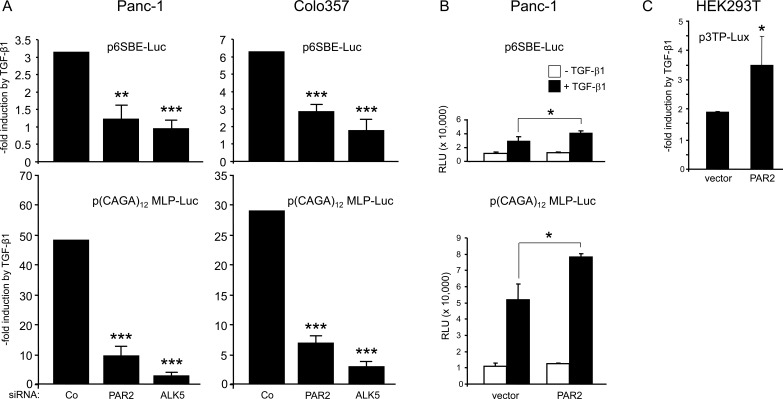Figure 3. Depletion of PAR2 decreases the sensitivity of TGF-β/Smad responsive reporters to TGF-β1 stimulation.
A. Panc-1 and Colo357 cells were transfected on day 1 with RNAiMAX along with negative control siRNA (Co), PAR2 siRNA or ALK5 siRNA. On day 2, cells received the same siRNAs along with either p6SBE-Luc (upper two graphs) or p(CAGA)12 MLP-Luc (lower two graphs), and the Renilla luciferase encoding vector pRL-TK-Luc using Lipofectamine 2000. Forty-eight h after the start of the first transfection, cells were stimulated with TGF-β1 for another 24 h followed by dual luciferase measurements. Data are the mean ± SD from six parallel wells. Asterisks indicate significance vs. TGF-β1-treated Co. B., C. Ectopic expression of PAR2 cells increases the sensitivity of Smad responsive reporter genes to TGF-β1. B. Panc-1 cells were transiently transfected with either empty pcDNA3 vector (vector) or PAR2 encoding vector (PAR2-HA) along with either p6SBE-Luc (upper graph) or p(CAGA)12 MLP-Luc (lower graph), and pRL-TK-Luc. Two days later, cells were treated with 5 ng/ml TGF-β1 for 24 h followed by lysis and dual luciferase assay. Data represent the normalised mean ± SD of six wells. C. HEK293T cells were cotransfected with p3TP-Lux, pRL-TK-Luc, and either empty vector or PAR2 encoding vector. Forty-eight h after the start of transfection, cells were stimulated with TGF-β1 for another 24 h followed by dual luciferase measurements. Data represent the mean ± SD from six wells. Data in A-C are representative of at least four independent experiments.

